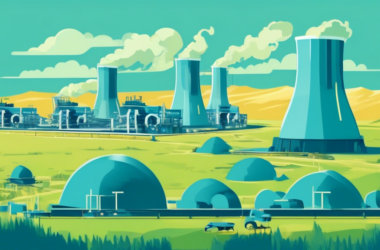“`markdown
Current Trends in the Uranium Industry
As of August 28, 2024, the uranium market displays a notable resilience, with spot prices stabilizing between $85 to $95 per pound. This stability follows a remarkable surge of nearly 90% in 2023, suggesting a healthy correction amid a bullish market cycle. Analysts note that this price stabilization could be indicative of a strong underlying demand fueled by the global push for cleaner energy solutions.
The U.S. uranium production landscape is experiencing a significant resurgence. Energy Fuels Inc. has initiated uranium extraction at multiple mines located in Arizona and Utah, with aspirations to advance production at additional sites in Colorado and Wyoming in the near future. This renewed focus on domestic supply is further highlighted by the U.S. Department of Energy’s recent request for proposals to procure up to $2.7 billion in domestically sourced low-enriched uranium, with the objective of diminishing dependency on foreign sources, particularly from Russia.
Market Dynamics and Future Prospects
The current environment indicates a considerable supply-demand imbalance, with more than 2 billion pounds of uranium required by 2040 yet to be contracted. Furthermore, little progress has been made on 20-25% of the uranium required by 2030, which remains unpermitted, unfunded, or unbuilt. Despite lower overall contracting volumes, long-term agreements—responsible for 75-80% of uranium transactions—are witnessing a 16% increase in term pricing this year, highlighting the value of strategic contracting in navigating the industry landscape.
On the regulatory and geopolitical front, the uranium market is sensitive to global developments. Policy support for nuclear energy, coupled with the international proliferation of nuclear power plants, particularly in nations like China and India, underscores a rise in global demand expected to persist. As countries seek to address climate change, nuclear energy is increasingly viewed as a central component of their energy strategies.
New mining developments are also revitalizing supply chains. Projects such as enCore Energy’s Alta Mesa in Texas and Uranium Energy Corp.’s Christenson Ranch in Wyoming aim to alleviate the forthcoming supply constraints. Collectively, these initiatives represent a strategic effort to confront the market’s looming challenges.
Investment opportunities in the uranium sector look promising due to the convergence of rising demand, heightened prices, and a critical supply crunch. With informed investors closely monitoring these trends, the potential for price accelerations creates rich possibilities, particularly for those engaging with uranium-focused investment strategies. The evolving dynamics of the uranium market reflects both challenges and opportunities that are likely to shape its future.
“`








/cdn.vox-cdn.com/uploads/chorus_asset/file/25447697/1589887063.jpg?w=380&resize=380,250&ssl=1)